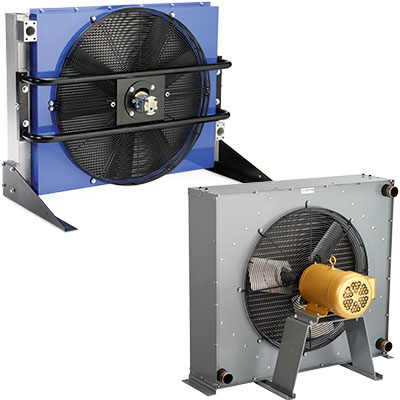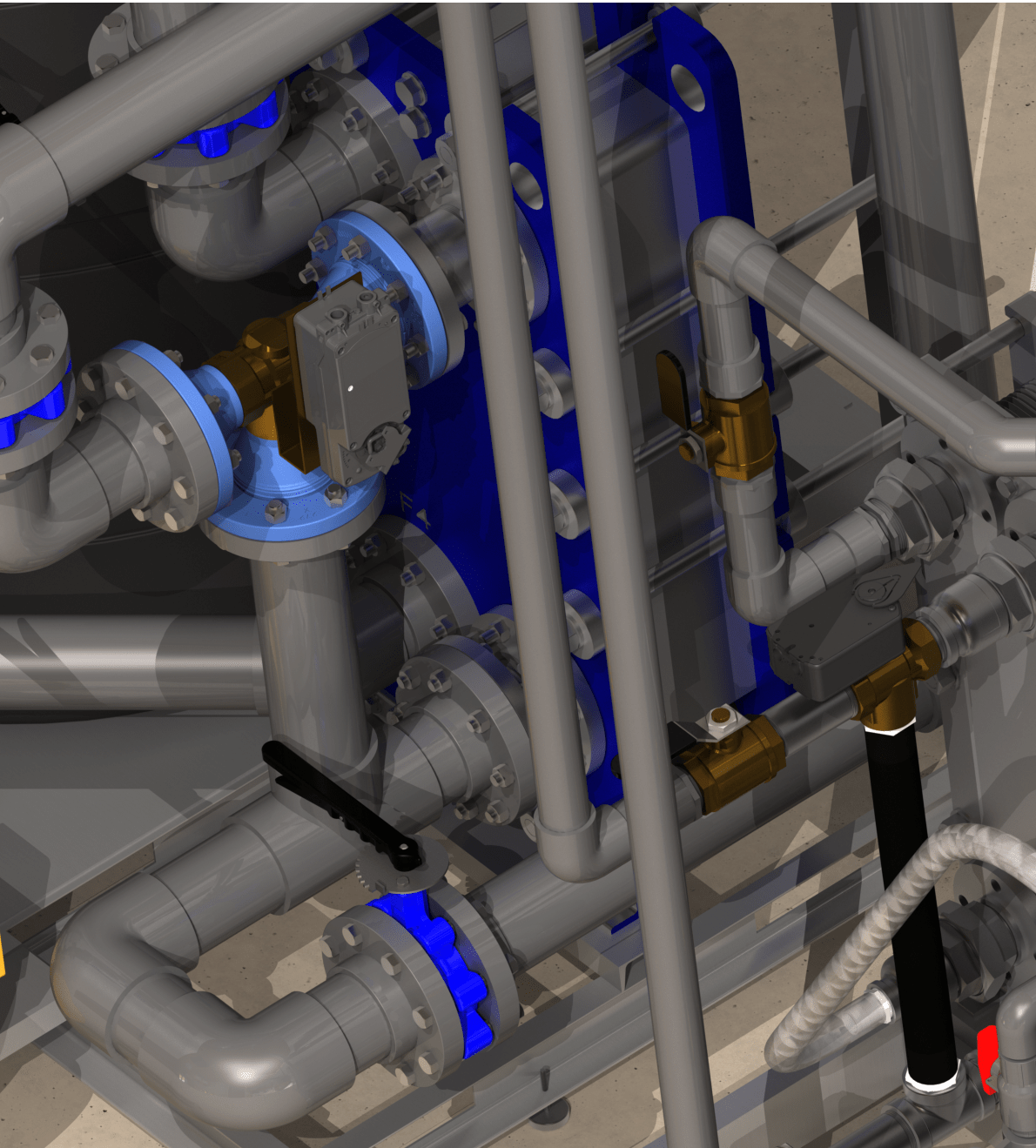Exploring How DVS Heat Transfer Systems Use Smart Sensors for Optimal Performance
Checking out the Advantages and Applications of Heat Transfer Systems in Modern Industry
Heat transfer systems play a necessary duty in modern industry. They include numerous mechanisms such as conduction, convection, and radiation, each adding to efficient thermal management. Industries like production and aerospace advantage significantly from these systems. As developments continue, the assimilation of ingenious products and modern technologies guarantees to improve energy performance. This development raises vital questions concerning the future implications for sustainability and operational prices across multiple fields. What lies in advance in this continuous transformation?
Understanding Heat Transfer Principles
Heat transfer concepts are essential to the operation of different commercial systems. These concepts include the mechanisms of transmission, convection, and radiation, each playing a crucial role in taking care of thermal energy. Recognizing conduction entails evaluating just how Heat relocates through solid materials, while convection pertains to Heat transfer in fluids, driven by fluid movement. Radiation, distinctive from the various other two, includes power transfer via electromagnetic waves. The effectiveness of Heat transfer influences system efficiency, energy usage, and total performance. Effective thermal management is crucial in procedures such as air conditioning, Heat, and heating healing. By understanding these principles, industries can enhance their procedures, lower power costs, and enhance equipment durability, consequently adding to an extra efficient and lasting commercial landscape.
Trick Kinds Of Heat Transfer Solutions
While numerous industries make use of Heat transfer systems for diverse applications, several essential kinds stand out because of their particular functions and performances. One of the most usual kinds consist of convection, transmission, and radiation systems. Conduction systems transfer Heat with straight call in between products, making them reliable in solid-state applications. Convection systems, on the various other hand, use liquid activity to transfer Heat, appropriate for heating or cooling down liquids and gases. Radiation systems run without a tool, counting on electro-magnetic waves to move Heat, ideal for high-temperature environments. Each kind serves distinct functions, enabling industries to customize their Heat transfer solutions based on functional needs, power effectiveness, and cost-effectiveness. Comprehending these systems is crucial for enhancing performance in numerous industrial setups.
Industrial Applications of Heat Transfer Technologies
The application of Heat transfer technologies in industry plays an essential duty in improving energy performance and enhancing processes. DVS Heat Transfer Systems. By carrying out sophisticated Heat exchange systems, business can considerably decrease their ecological effect while boosting total efficiency. This integration not just fosters sustainability yet also straightens with modern regulative and customer demands for greener methods
Energy Efficiency Improvements
As markets progressively focus on sustainability, energy efficiency enhancements in Heat transfer technologies have actually become essential for reducing operational prices and environmental effect. Improved Heat exchangers, for circumstances, make use of advanced products and designs to make the most of thermal efficiency while reducing power consumption. Integrating variable rate drives in pumping systems permits for far better control of fluid circulation, leading to substantial energy savings. The application of smart sensors and automation offers real-time tracking, making it possible for modifications that enhance power usage. Furthermore, waste Heat recovery systems capture excess thermal energy, transforming it right into useful power. These advancements not just improve power efficiency but also add to a more sustainable industrial landscape by reducing greenhouse gas emissions and sustaining conformity with ecological regulations.
Process Optimization Techniques
Process optimization strategies are crucial in enhancing the efficiency and effectiveness of Heat transfer modern technologies in commercial applications. These methods involve refining processes to make the most of Heat transfer performance while minimizing power intake and functional expenses. Methods such as computational fluid characteristics (CFD) modeling permit engineers to assess and replicate Heat transfer scenarios, identifying areas for improvement. Furthermore, real-time monitoring systems can supply important data on temperature level gradients and flow prices, enabling changes that maximize performance. Furthermore, implementing innovative control methods, such as predictive analytics, can boost system responsiveness to varying functional demands. By applying these optimization techniques, markets can achieve higher thermal efficiency, decreased downtime, and boosted product high quality, inevitably leading to increased competitiveness in the industry.

Ecological Impact Reduction
While industrial Heat transfer innovations are necessary for operational effectiveness, their application also provides possibilities for considerable environmental effect decrease. By improving energy effectiveness, these systems minimize fuel usage, bring about reduced greenhouse gas emissions. Advanced Heat exchangers can recuperate waste Heat, rerouting it to preheat incoming liquids, thus lowering power demands. Furthermore, the integration of Heat transfer innovations in sustainable energy systems, such as solar thermal and geothermal applications, sustains the change to sustainable methods. Industries that use these modern technologies also benefit from decreased functional expenses and enhanced regulative conformity. On the whole, the strategic implementation of Heat transfer systems not only bolsters efficiency however likewise promotes a much more sustainable industrial landscape, adding to global environmental goals.
Advantages of Efficient Heat Transfer Systems
Effective Heat transfer systems supply considerable advantages in modern-day industry, primarily through improved energy effectiveness and expense decrease. By maximizing thermal monitoring, these systems decrease power waste, causing reduced operational costs (DVS Heat Transfer Systems). Businesses can attain better sustainability and enhanced profitability.

Power Efficiency Improvements
As industries increasingly focus on sustainability and cost-effectiveness, power performance improvements in Heat transfer systems more information have emerged as a vital focus. Improved effectiveness in these systems causes lowered power intake, allowing facilities to operate more sustainably. By optimizing Heat transfer techniques, industries can reduce waste Heat and achieve better thermal management, significantly reducing their ecological influence. Developments in modern technologies such as Heat exchangers and insulation materials add to boosted efficiency and dependability. Moreover, executing energy-efficient Heat transfer options not only supports conformity with governing requirements however also fosters a culture of development within organizations. Ultimately, these improvements are crucial in straightening industrial procedures with international energy conservation objectives, leading the way for a much more sustainable future in production and processing sectors.
Cost Decrease Opportunities
By maximizing Heat transfer systems, sectors can expose significant expense reduction chances that enhance their profits. Reliable Heat transfer reduces energy usage, resulting in reduced energy expenses and lessening operational expenditures. Furthermore, boosted system performance lowers visit the need for upkeep and repairs, in addition saving expenses with time. Boosted Heat transfer can likewise expand equipment life expectancy, permitting companies to postpone resources expenditures on replacements. Waste Heat recuperation systems can transform excess Heat into useful energy, even more driving down expenses. These systems not just streamline processes but likewise add to sustainability campaigns, positioning business positively in an increasingly eco-conscious market. Generally, the economic advantages of reliable Heat transfer systems are substantial and necessary for affordable advantage.
Developments in Heat Transfer Solutions
Exactly how can modern industry improve its operations via ingenious Heat transfer options? By embracing advanced products and modern technologies, sectors can greatly improve thermal efficiency and performance. Advancements such as nanofluids, which enhance Heat transfer abilities past traditional fluids, and phase modification materials that keep and release thermal energy, are acquiring grip. In addition, the combination of wise sensors and IoT devices enables real-time tracking and optimization of Heat transfer procedures, reducing waste and improving system responsiveness. Additive production strategies enable the development of even more complex Heat exchangers that take full advantage of surface location while minimizing product use. Collectively, these innovations drive operational efficiency and develop affordable advantages in different markets, including power, aerospace, and manufacturing.
The Duty of Heat Transfer in Sustainability Efforts
While the promote sustainability remains to reshape sectors, the function of Heat transfer innovations becomes significantly important in achieving ecological goals. Efficient Heat transfer systems assist in energy effectiveness by optimizing thermal management in numerous procedures, significantly reducing energy intake and greenhouse gas emissions. As an example, progressed Heat exchangers are used in commercial applications to recover waste Heat, consequently decreasing power waste. Additionally, advancements such as stage change products boost thermal storage, contributing to eco-friendly energy combination. The adoption of lasting liquids in Heat transfer systems can decrease environmental influence. By focusing on efficient Heat transfer, sectors not just boost operational performance but also line up with worldwide link sustainability efforts, promoting a cleaner, a lot more lasting future.
Often Asked Inquiries
Just How Do Heat Transfer Equipments Influence Power Expenses in Production?
Heat transfer systems markedly affect power prices in manufacturing by enhancing efficiency, reducing waste, and optimizing thermal monitoring. These renovations bring about decrease functional expenditures, eventually benefiting general productivity and success in industrial operations.
What Upkeep Is Needed for Heat Transfer Solutions?
Upkeep for Heat transfer systems consists of routine assessments, cleansing of parts, examining liquid levels and conditions, replacing used components, and making sure correct insulation. These actions enhance performance, prolong lifespan, and prevent pricey malfunctions in operation.
Exist Security Worry About Heat Transfer Solutions?
Security worry about Heat transfer systems consist of potential leaks, stress build-up, and thermal dangers. Proper style, normal maintenance, and adherence to safety procedures are necessary to reduce these risks and ensure safe operation in commercial environments.
Exactly How Can I Pick the Right Heat Transfer System for My Company?
Selecting the appropriate Heat transfer system involves examining factors such as effectiveness, application requirements, spending plan constraints, and security criteria. An extensive evaluation of these elements will aid guarantee suitable performance and dependability in service procedures.
What Are Typical Failings in Heat Transfer Equipments and Their Causes?

Recognizing transmission involves assessing how Heat moves with strong products, while convection pertains to Heat transfer in fluids, driven by fluid movement. By maximizing Heat transfer techniques, markets can decrease waste Heat and achieve much better thermal monitoring, greatly lowering their environmental effect. Waste Heat recuperation systems can change excess Heat into usable power, even more driving down expenses. Progressed Heat exchangers are used in industrial applications to recover waste Heat, consequently reducing power waste. Usual failures in Heat transfer systems include leaks, corrosion, and inefficient Heat exchange.